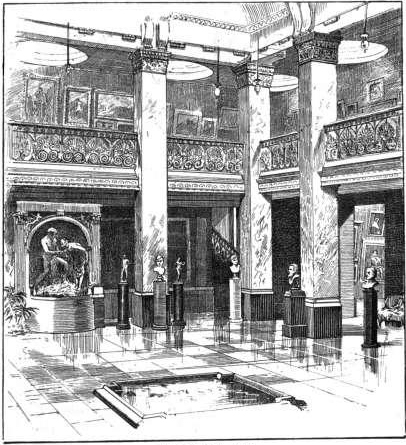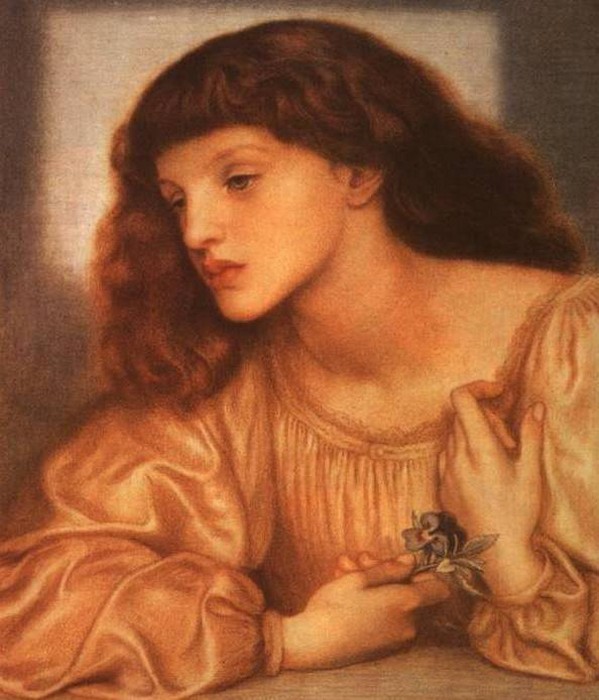|
Arts And Crafts Exhibition Society
The Arts and Crafts Exhibition Society was formed in London in 1887 to promote the exhibition of decorative arts alongside fine arts. The Society's exhibitions were held annually at the New Gallery (London), New Gallery from 1888 to 1890, and roughly every three years thereafter,Crane, "Of the Arts and Crafts Movement" were important in the flowering of the British Arts and Crafts Movement in the decades prior to World War I. History The illustrator and designer Walter Crane served as the founding president of the Society for its first three years. Of its goals and purposes, he wrote: Annual exhibitions were held at the New Gallery in 1888, 1889, and 1890, but the third exhibition failed to match the quality of the first two, and was a financial disaster. William Morris succeeded Crane as president in 1891., and the Society thereafter chose to reduce the frequency of showings in order to ensure an abundance of materials to display. The Society published ''Arts and Crafts Essa ... [...More Info...] [...Related Items...] OR: [Wikipedia] [Google] [Baidu] |
Decorative Arts
] The decorative arts are arts or crafts whose object is the design and manufacture of objects that are both beautiful and functional. It includes most of the arts making objects for the interiors of buildings, and interior design, but not usually architecture. Ceramic art, metalwork, furniture, jewellery, fashion, various forms of the textile arts and glassware are major groupings. Applied arts largely overlaps with decorative arts, and the modern making of applied art is usually called design. The decorative arts are often categorized in distinction to the " fine arts", namely painting, drawing, photography, and large-scale sculpture, which generally produce objects solely for their aesthetic quality and capacity to stimulate the intellect. Distinction from the fine arts The distinction between the decorative and fine arts essentially arose from the post-Renaissance art of the West, where the distinction is for the most part meaningful. This distinction is much less meani ... [...More Info...] [...Related Items...] OR: [Wikipedia] [Google] [Baidu] |
New Gallery (London)
The New Gallery is a Crown Estate-owned Grade II Listed buildingIPA: ''New Gallery, Regent Street, London'' Linked 2015-11-21 at 121 , London, which originally was an from 1888 to 1910, The New Gallery Restaurant from 1910 to 1913, The New Gallery Cinema from 1913 to 1953,Cinema Treasure: ''New Gallery Cinema'' Relinked 2015-11-21 and a |
World War I
World War I (28 July 1914 11 November 1918), often abbreviated as WWI, was one of the deadliest global conflicts in history. Belligerents included much of Europe, the Russian Empire, the United States, and the Ottoman Empire, with fighting occurring throughout Europe, the Middle East, Africa, the Pacific, and parts of Asia. An estimated 9 million soldiers were killed in combat, plus another 23 million wounded, while 5 million civilians died as a result of military action, hunger, and disease. Millions more died in genocides within the Ottoman Empire and in the 1918 influenza pandemic, which was exacerbated by the movement of combatants during the war. Prior to 1914, the European great powers were divided between the Triple Entente (comprising France, Russia, and Britain) and the Triple Alliance (containing Germany, Austria-Hungary, and Italy). Tensions in the Balkans came to a head on 28 June 1914, following the assassination of Archduke Franz Ferdin ... [...More Info...] [...Related Items...] OR: [Wikipedia] [Google] [Baidu] |
Walter Crane
Walter Crane (15 August 184514 March 1915) was an English artist and book illustrator. He is considered to be the most influential, and among the most prolific, children's book creators of his generation and, along with Randolph Caldecott and Kate Greenaway, one of the strongest contributors to the child's nursery motif that the genre of English children's illustrated literature would exhibit in its developmental stages in the later 19th century. Crane's work featured some of the more colourful and detailed beginnings of the child-in-the-garden motifs that would characterize many nursery rhymes and children's stories for decades to come. He was part of the Arts and Crafts movement and produced an array of paintings, illustrations, children's books, ceramic tiles, wallpapers and other decorative arts. Crane is also remembered for his creation of a number of iconic images associated with the international Socialist movement. Biography Early life and influences Crane was t ... [...More Info...] [...Related Items...] OR: [Wikipedia] [Google] [Baidu] |
William Morris
William Morris (24 March 1834 – 3 October 1896) was a British textile designer, poet, artist, novelist, architectural conservationist, printer, translator and socialist activist associated with the British Arts and Crafts Movement. He was a major contributor to the revival of traditional British textile arts and methods of production. His literary contributions helped to establish the modern fantasy genre, while he helped win acceptance of socialism in ''fin de siècle'' Great Britain. Morris was born in Walthamstow, Essex, to a wealthy middle-class family. He came under the strong influence of medievalism while studying Classics at Oxford University, there joining the Birmingham Set. After university, he married Jane Burden, and developed close friendships with Pre-Raphaelite artists Edward Burne-Jones and Dante Gabriel Rossetti and with Neo-Gothic architect Philip Webb. Webb and Morris designed Red House in Kent where Morris lived from 1859 to 1865, before moving t ... [...More Info...] [...Related Items...] OR: [Wikipedia] [Google] [Baidu] |
Ford Madox Brown
Ford Madox Brown (16 April 1821 – 6 October 1893) was a British painter of moral and historical subjects, notable for his distinctively graphic and often William Hogarth, Hogarthian version of the Pre-Raphaelite style. Arguably, his most notable painting was ''Work (painting), Work'' (1852–1865). Brown spent the latter years of his life painting the twelve works known as ''The Manchester Murals'', depicting History of Manchester, Mancunian history, for Manchester Town Hall. Early life Brown was the grandson of the medical theorist John Brown (physician, born 1735), John Brown, founder of the Brunonian system of medicine. His great-grandfather was a Scottish labourer. His father Ford Brown served as a purser in the Royal Navy, including a period serving under Sir Isaac Coffin, 1st Baronet, Sir Isaac Coffin and a period on HMS Arethusa (1781), HMS ''Arethusa''. He left the Navy after the end of the Napoleonic Wars. In 1818, Ford Brown married Caroline Madox, of an ol ... [...More Info...] [...Related Items...] OR: [Wikipedia] [Google] [Baidu] |
May Morris
Mary "May" Morris (25 March 1862 – 17 October 1938) was an English artisan, embroidery designer, jeweller, socialist, and editor. She was the younger daughter of the Pre-Raphaelite artist and designer William Morris and his wife and artists' model, Jane Morris (née Burden). Biography May Morris was born on 25 March 1862 at Red House, Bexleyheath, and named Mary, as she was born on the Feast of the Annunciation. May learned to embroider from her mother and her aunt Bessie Burden, who had been taught by William Morris. In 1878, she enrolled at the National Art Training School, precursor of the Royal College of Art. In 1885, aged 23, she became the Director of the Embroidery Department at her father's enterprise Morris & Co. During her time in the role she was responsible for producing a range of designs, which were frequently misattributed as her father's work. She ran this department until her father's death in 1896, where she moved into an advisory role. In 1886, May fel ... [...More Info...] [...Related Items...] OR: [Wikipedia] [Google] [Baidu] |
Henry Wilson (architect And Designer)
Henry Wilson (12 March 1864 – 7 March 1934) was a British architect, jeweller and designer. Career He was born at 91 Red Rock Street in West Derby near Liverpool on 12 March 1864. He studied at the Kidderminster School of Art before being articled to the architect Edward James Shrewsbury in Maidenhead. He then worked and was trained in the practices of John Oldrid Scott, John Belcher and J. D. Sedding. After Sedding's death in 1891 Wilson completed many of Sedding's schemes. He followed Sedding's ideals, but his designs were often more original and grander in scale. From about 1895 Wilson designed metalwork, church plate and furnishings, jewellery and sculpture, becoming a gifted craftsman in the Arts and Crafts Movement. He was in business at 17 Vicarage Gate, Kensington, London from 1896 to 1899. In 1892 he joined the Art Workers Guild. From 1896 he taught in London at the Central School of Arts and Crafts, and from 1901 taught metalwork at the Royal College of Art. He ... [...More Info...] [...Related Items...] OR: [Wikipedia] [Google] [Baidu] |
Design And Industries Association
The Design and Industries Association is a United Kingdom charity whose object is to ''engage with all those who share a common interest in the contribution that design can make to the delivery of goods and services that are sustainable and enhance the quality of life for communities and the individual."'' 20th century Shortly before the Great War there was a growing awareness, among British designers, of the extent to which German industrial design had taken the ideals of the Arts and Crafts movement (that had originated with William Morris and others in Britain in the late 19th century) and had successfully moved these into the age of mass, mechanised, production. The German Deutscher Werkbund organisation's Cologne exhibition, held before the outbreak of war in 1914, had been visited by many of those designers, architects, retailers and industrialists who were later to found the Design and Industries Association.Rebels Against Commercial Ugliness, Peyton Skipworth, Apollo Magazi ... [...More Info...] [...Related Items...] OR: [Wikipedia] [Google] [Baidu] |
Mary Elizabeth Turner
Mary Elizabeth Turner (née Powell; 1854–1907) was an English embroiderer who exhibited her work at the 1890 exposition of the Arts and Crafts Exhibition Society, for which she wrote an essay on modern embroidery. Identified with the Arts and Crafts Movement, she was a founder with May Morris of the Women’s Guild of Arts. Her father was Thomas Wilde Powell, a solicitor and stockbroker who was also a patron of architects and artists. One of her siblings was the artist, copyist and art patron Christiana Herringham. Her husband was the architect Hugh Thackeray Turner. One of her children, her daughter Christiana Ruth Turner, was the wife of climber George Mallory George Herbert Leigh Mallory (18 June 1886 – 8 or 9 June 1924) was an English mountaineer who took part in the first three British expeditions to Mount Everest in the early 1920s. Born in Cheshire, Mallory became a student at Winchest .... References Further reading *''Arts and Crafts Essays'' by ... [...More Info...] [...Related Items...] OR: [Wikipedia] [Google] [Baidu] |
British Art
The Art of the United Kingdom refers to all forms of visual art in or associated with the United Kingdom since the formation of the Kingdom of Great Britain in 1707 and encompasses English art, Scottish art, Welsh art and Irish art, and forms part of Western art history. During the 18th century, Britain began to reclaim the leading place England had previously played in European art during the Middle Ages, being especially strong in portraiture and landscape art. Increased British prosperity at the time led to a greatly increased production of both fine art and the decorative arts, the latter often being exported. The Romanticism, Romantic period resulted from very diverse talents, including the painters William Blake, J. M. W. Turner, John Constable and Samuel Palmer. The Victorian period saw a great diversity of art, and a far bigger quantity created than before. Much Victorian art is now out of critical favour, with interest concentrated on the Pre-Raphaelites and the in ... [...More Info...] [...Related Items...] OR: [Wikipedia] [Google] [Baidu] |
.jpg)





